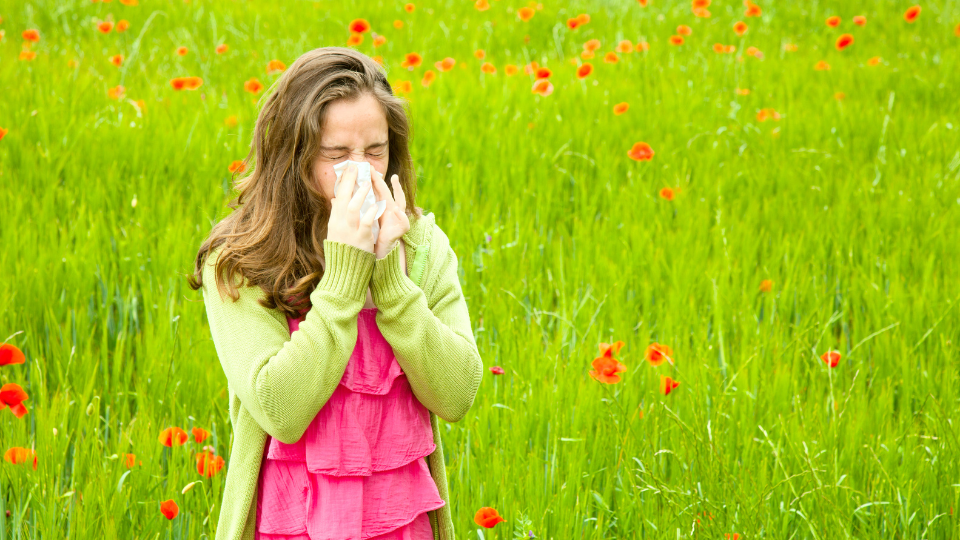With hay fever season fast approaching, I wanted to review this condition and discuss avoidance strategies as well as seeing what common treatment options are available as well as some of the newer options.
Allergic to hay?
The old nickname of hay fever was coined because symptoms would occur during the hay harvest from May under late summer, but is actually quite misleading, as these symptoms are rarely due to an allergy to hay.
A better terminology to use is ‘seasonal allergies’, with spring hay fever usually from allergy to tree pollens (March-May); summer hay fever usually from allergy to grass pollens (May-July) and some autumn hay fever symptoms can be caused by allergy to weed pollens (as late as October).
Hay fever burden on society
Hay fever is very common, affecting 1 in 5 people, and grass pollen allergy is the commonest cause. Hay fever tends to run in families, and it can be connected with other allergic/atopic conditions such as Asthma and Eczema. It often develops in school age children and in the teens but can occur at any age.
Symptoms include runny, itchy or blocked nose, sneezing, itchy eyes, scratchy throat and the feeling of a constant cold from sinus congestion. This can lead to headaches and poor concentration which can have a significant impact on performance at GCSE’s and A’-levels during peak season. Sometimes symptoms can be so bad that they interrupt sleep which has a knock-on impact on the follow day’s productivity and ability to concentrate.
Most sufferers diagnose hay fever themselves from experiencing the typical symptoms at the same time each year. A medical diagnosis can be made through Skin Prick Testing or blood IgE testing which you can read more about here.
Avoidance Avoidance Avoidance
Although it is impossible to completely avoid pollens in the air, if you are able to reduce pollen exposure by using the following tips, your symptoms should reduce:
- Monitor pollen forecasts daily and stay indoors whenever possible is the count is high
- Wear wrap-around sunglasses when outside to prevent pollen going in to the eyes
- When coming inside from being outdoors, change your clothes at the door and wash your face especially eyebrows or beard that could have trapped pollen
- Keep your bedroom window shut throughout the day so no pollen gets inside as you spend 7+ hours in there sleeping!
- Spread a nasal balm around both nostrils to trap any pollen
- Keep car windows closed as pollen counts are high along roads with grass verges
- Avoid freshly cut grass / large grassy places like commons. Sea breezes blow pollen in land so consider a trip to the coast instead of a rural location!
- Do not keep fresh flowers in the house
- Avoid smoke where possible as this can make symptoms worse
- Don’t dry washing outside as they trap pollen
Over the counter and prescription medications
Anti-histamines – these work by blocking the allergic response. There are several brands available over the counter and you should make sure you buy the once daily form that is non-drowsy. Sometimes these are all that is required if symptoms are mild. Some prescription-only antihistamines are available through your GP or Consultant Allergist.
Nasal sprays – these are often steroids or antihistamines that work by reducing inflammation in the nose. Nasal sprays will often also help control eye symptoms as well due to medication taking affect up the nasolacrimal duct from the nose to the inner edges of the eyes.
Eye drops – these can be effective if taken regularly throughout the day but must be started before you leave the house before any symptoms start.
What other treatment options are there?
Most hay fever sufferers are well aware of the treatment options above and have tried every type or brand available and still are getting breakthrough symptoms, and so they search for alternative options, of which there are 2 key options:
- IMMUNOTHERAPY – also known as desensitisation treatment, this works by causing a tolerance to an allergen by blocking the immune system and hopefully switching it off to that specific allergen e.g. grass or tree pollens. There are 2 types available
- sub-cutaneous (injection) – these are initially weekly
- sub-lingual (tablet/drop under the tongue) – often taken at home each morning.
- IMMUNOTHERAPY – also known as desensitisation treatment, this works by causing a tolerance to an allergen by blocking the immune system and hopefully switching it off to that specific allergen e.g. grass or tree pollens. There are 2 types available
The effects are seen within the first year, but for maximal effectiveness immunotherapy should be continued for 3 years to prevent relapse in symptoms. Therefore cost and convenience of this long-term treatment are major factors for consideration.
- RHINOLIGHT – this is the latest medication-freetreatment for nasal symptoms from hay fever, and ROC is proud to be the only UK clinic offering this to our patients. It is a light treatment that is shone up both nostrils for up to 3 minutes per nostril, 6 times over 2 weeks which can be booked at your convenience. It works in a similar way to an anti-histamines by stopping the allergic response in the nasal lining. Outcomes have been excellent with people immediately reporting less sneezing. Like immunotherapy, the course is likely to need repeating each year at the start of the season for 3 years
Interested in rhinolight or want to discuss your concerns about allergy? Book an appointment now with one of our experienced private doctors!


